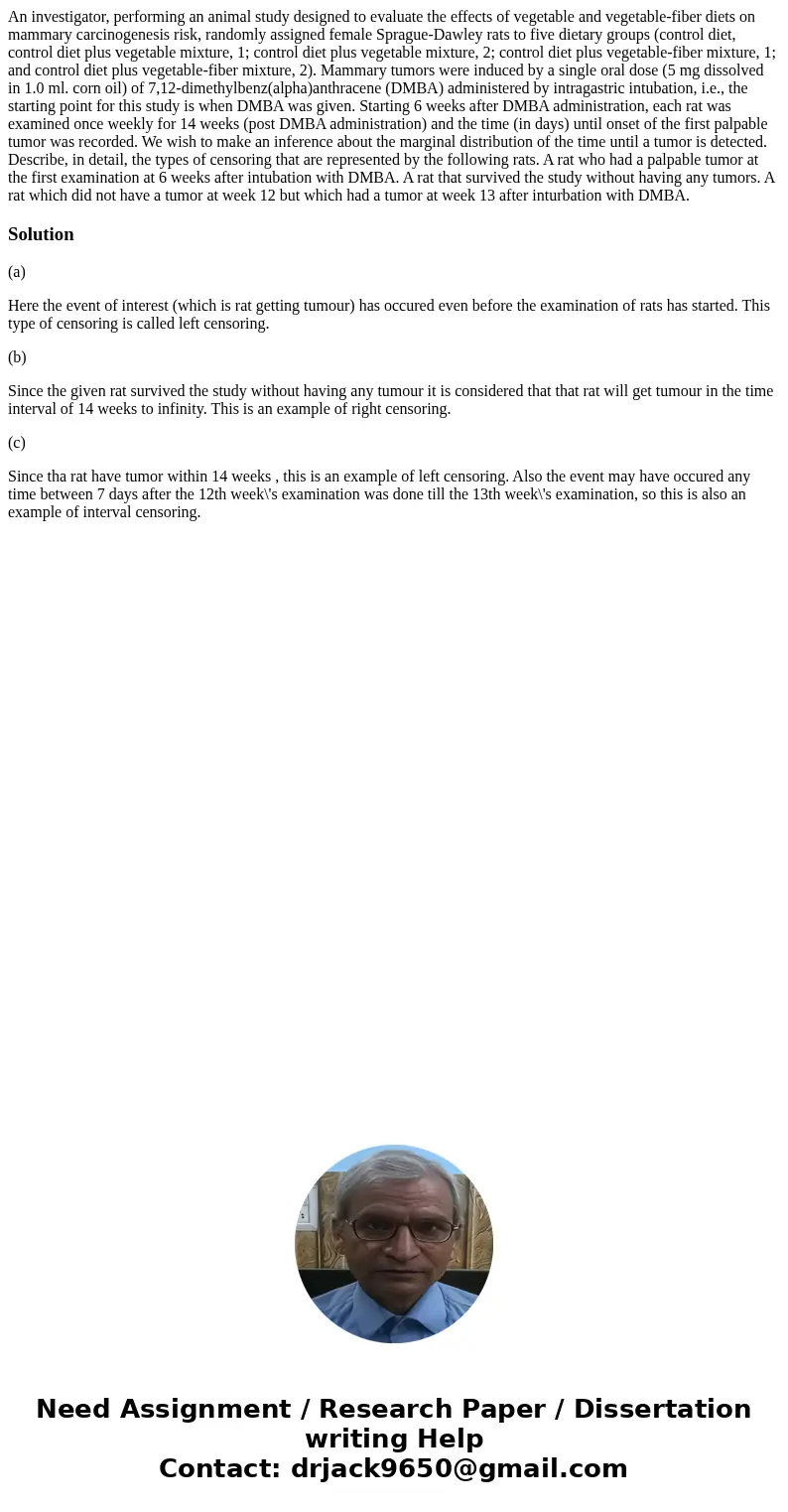An investigator performing an animal study designed to evalu
An investigator, performing an animal study designed to evaluate the effects of vegetable and vegetable-fiber diets on mammary carcinogenesis risk, randomly assigned female Sprague-Dawley rats to five dietary groups (control diet, control diet plus vegetable mixture, 1; control diet plus vegetable mixture, 2; control diet plus vegetable-fiber mixture, 1; and control diet plus vegetable-fiber mixture, 2). Mammary tumors were induced by a single oral dose (5 mg dissolved in 1.0 ml. corn oil) of 7,12-dimethylbenz(alpha)anthracene (DMBA) administered by intragastric intubation, i.e., the starting point for this study is when DMBA was given. Starting 6 weeks after DMBA administration, each rat was examined once weekly for 14 weeks (post DMBA administration) and the time (in days) until onset of the first palpable tumor was recorded. We wish to make an inference about the marginal distribution of the time until a tumor is detected. Describe, in detail, the types of censoring that are represented by the following rats. A rat who had a palpable tumor at the first examination at 6 weeks after intubation with DMBA. A rat that survived the study without having any tumors. A rat which did not have a tumor at week 12 but which had a tumor at week 13 after inturbation with DMBA.
Solution
(a)
Here the event of interest (which is rat getting tumour) has occured even before the examination of rats has started. This type of censoring is called left censoring.
(b)
Since the given rat survived the study without having any tumour it is considered that that rat will get tumour in the time interval of 14 weeks to infinity. This is an example of right censoring.
(c)
Since tha rat have tumor within 14 weeks , this is an example of left censoring. Also the event may have occured any time between 7 days after the 12th week\'s examination was done till the 13th week\'s examination, so this is also an example of interval censoring.

 Homework Sourse
Homework Sourse